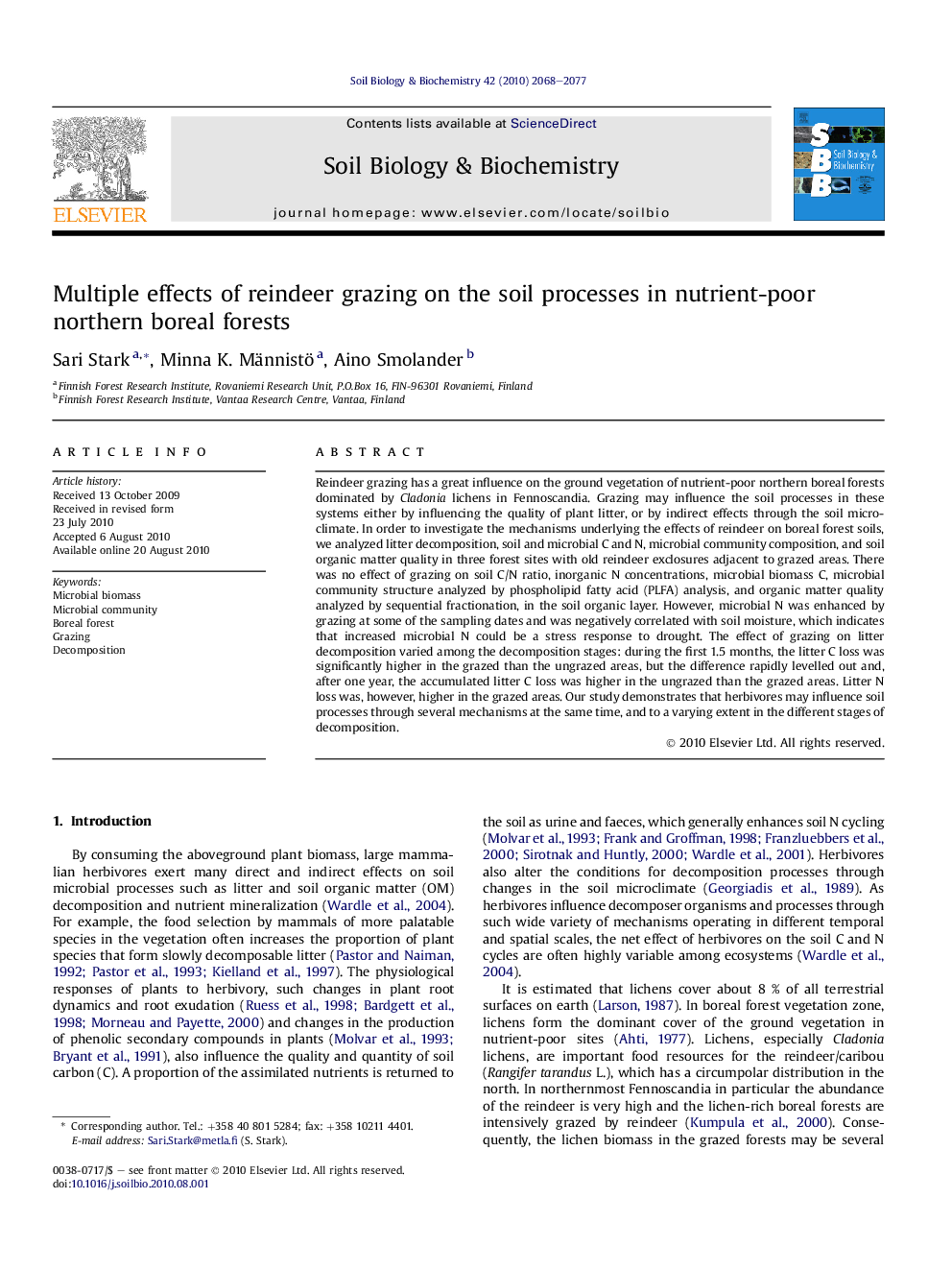| Article ID | Journal | Published Year | Pages | File Type |
|---|---|---|---|---|
| 2025359 | Soil Biology and Biochemistry | 2010 | 10 Pages |
Reindeer grazing has a great influence on the ground vegetation of nutrient-poor northern boreal forests dominated by Cladonia lichens in Fennoscandia. Grazing may influence the soil processes in these systems either by influencing the quality of plant litter, or by indirect effects through the soil microclimate. In order to investigate the mechanisms underlying the effects of reindeer on boreal forest soils, we analyzed litter decomposition, soil and microbial C and N, microbial community composition, and soil organic matter quality in three forest sites with old reindeer exclosures adjacent to grazed areas. There was no effect of grazing on soil C/N ratio, inorganic N concentrations, microbial biomass C, microbial community structure analyzed by phospholipid fatty acid (PLFA) analysis, and organic matter quality analyzed by sequential fractionation, in the soil organic layer. However, microbial N was enhanced by grazing at some of the sampling dates and was negatively correlated with soil moisture, which indicates that increased microbial N could be a stress response to drought. The effect of grazing on litter decomposition varied among the decomposition stages: during the first 1.5 months, the litter C loss was significantly higher in the grazed than the ungrazed areas, but the difference rapidly levelled out and, after one year, the accumulated litter C loss was higher in the ungrazed than the grazed areas. Litter N loss was, however, higher in the grazed areas. Our study demonstrates that herbivores may influence soil processes through several mechanisms at the same time, and to a varying extent in the different stages of decomposition.
Research highlights► Grazing effects on litter decomposition rates varied at different stages of decomposition. ► Reindeer grazing did not influence microbial community composition or soil organic matter quality. ► Microbial N increased in dry periods, indicating microbial stress response for drought.
